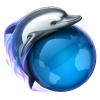
Dolphin 8: Directories Structure
AlexT
posted 6th of July 2014
in
Dolphin.pro News.
3 comments.
- /cache/ - cache files which should be unaccessible from the web (DB queries cache, language files cache, etc)
- /cache_public/ - cache files accessible from the web (CSS and JS cache files)
- /inc/ - system core code
- /inc/header.inc.php - main config file which is created during installation (contains DB access credentials)
- /inc/classes/ - system core classes
- /inc/js/ - system core JS code
- /install/ - files to perform installation (should be deleted after install)
- /install/sql/system.sql - main DB installation file with DB structure and some necessary data
- /install/sql/addon.sql - after installation DB file which adds some data entered during install to the DB (admin account, site title, version, email, etc)
- /install/cmd.php - php script to perform installation from command line (type /path/to/php cmd.php -h for available options)
- /logs/ - logs folder, modules should log to this folder as well
- /modules/ - modules folder (language files and templates as well), particular module is located in the folder /modules/vendor_name/module_name
- /periodic/cron.php - cron jobs PHP script to run in 1 minute interval
- /plugins/ - 3rd-party libraries which should be unaccessible from the web (usually PHP libraries)
- /plugins_public/ - 3rd-party libraries accessible from the web (usually JS libraries)
- /storage/ - storage folder, all modules must store any files in this folder using Storage objects (usually user uploaded files)
- /studio/ - site control panel files
- /template/ - base template
- /tmp/ - temporary files
Main differences in directories structure from Dolphin 7
- Template folder contains only base files, particular template files (which can override base files are located in particular template module), the same is for template files in module
- Language file is now located in particular language module, generated language cache file is in /cache/ folder
- Modules may not store files directly in own folder structure, instead they must use system /logs/, /tmp/ folders and Storage object
- No more /administration/ folder, instead there is /studio/, which contains functionality related to site configuration only, other administration functionality is moved to the user side controlled by membership levels, there are build-in Moderator and Administrator ACL levels
Module structure
- /classes/ - module classes
- /install/ - module installation files
- /install/langs/ - modules language files, english language file must be present at least
- /install/sql/ - module SQL files: install.sql, uninstall.sql, enable.sql, disable.sql
- /install/config.php - module config to perform installation
- /install/installer.php - class with additional installation instructions
- /template/ - module base template files
Additionally:
- when module is template then there is /data/template/ folder with template for system and studio (see uni module as an example)
- when module is language then there is /data/langs/ folder with language XML files (see english module as an example)
Actually module structure is very similar to the module structure in Dolphin 7, with the following main differences:
- Module may not store any files in own folders, instead module should use system folders /tmp/, /logs/, /cache/, /cache_public/, /storage/; please note that /storage/ folder may not be used directly, it should be used using Storage object class
- Template and language are now modules as well
- There are base modules: modules/base/profile - for profile based modules, modules/base/text - for text based modules, modules/base/general - general classes for other base modules or any module
- There are 4 SQL files in each module for install/uninstall and activation/deactivation, upon module deactivation/activation - module content is preserved, but all other settings and data is reset
- Module template contains only base template files, so folder was renamed from /templates/ to /template/ and no /base/ folder inside
- Languages are now in XML format






EDIT: Btw, when the git repo will be public?